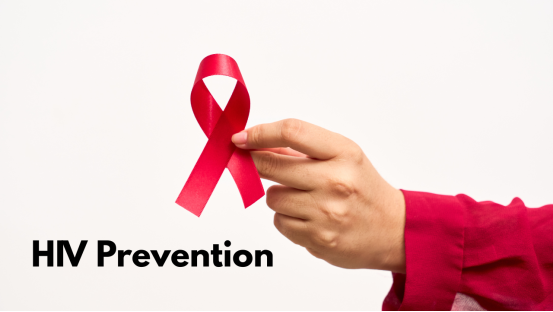HIV prevention has advanced remarkably in recent years. With growing public awareness and breakthroughs in medical science, protecting against HIV (Human Immunodeficiency Virus) is now more effective and widely accessible than ever before. While HIV remains a serious global health issue, today’s preventive tools and treatments empower individuals to take control of their health and greatly reduce the risk of infection. Through consistent and informed prevention, HIV can largely be avoided, helping people live longer and healthier lives.

Understanding HIV and Its Prevention
HIV attacks the immune system and, if left untreated, can progress to AIDS (Acquired Immunodeficiency Syndrome). Preventing HIV involves a combination of behavioral strategies, testing, and medical interventions that significantly reduce the risk of transmission.
Using Condoms and Barrier Protection
One of the most effective ways to prevent HIV is by using condoms or other protective barriers during sexual activity. Since HIV spreads through bodily fluids like semen, vaginal secretions, and blood, protection plays a key role in preventing infection.
Male and female condoms are highly effective when used correctly every time.
Dental dams are helpful during oral sex to reduce transmission risk.
Consistent condom use also protects against other sexually transmitted infections (STIs), which can increase HIV susceptibility.
Regular Testing and Partner Communication
Getting tested for HIV on a routine basis is one of the most reliable ways to prevent transmission. Many individuals living with HIV are unaware of their infection, which can unknowingly spread the virus.
Health authorities recommend testing at least once for everyone aged 13–64 and more often for those at higher risk.
HIV tests are widely available, quick, and often free through clinics, community centers, or at-home kits.
Open and honest conversations about testing history and HIV status with sexual partners are essential.
Knowing your HIV status allows you to make informed choices about prevention, treatment, and safer practices.
PrEP: Preventing Infection Before Exposure
Pre-Exposure Prophylaxis (PrEP) is a preventive medication regimen for individuals at higher risk of HIV exposure. When taken daily as prescribed, PrEP can reduce the risk of sexual transmission by more than 99% and lower the risk for people who inject drugs by around 74%.
PrEP is recommended for:
Those with HIV-positive partners
Individuals with multiple partners or inconsistent condom use
People diagnosed with STIs that increase HIV risk
Drug users who share injection equipment
Currently, several PrEP options exist, including daily oral pills and injectable versions like Apretude, which is administered every two months.
PEP: Immediate Action After Potential Exposure
Post-Exposure Prophylaxis (PEP) is an emergency treatment that can stop HIV infection after possible exposure. It involves taking antiretroviral medications for 28 days and must be started within 72 hours—ideally within the first 24 hours.
PEP is typically used in cases such as:
Condom failure during sex with a partner of unknown or positive status
Sexual assault
Needlestick injuries among healthcare workers
Shared needle use
PEP is available at emergency departments, urgent care facilities, and certain sexual health clinics.
Avoiding Needle Sharing
Sharing needles or syringes poses a high risk for HIV transmission, as the virus can be passed through infected blood. This applies not only to drug injection but also to hormone or medication use.
To minimize risk:
Always use sterile needles and syringes.
Obtain clean supplies from needle exchange programs or pharmacies.
Properly dispose of used equipment and seek addiction or harm reduction support when needed.
Many communities offer confidential services for individuals seeking safer injection options or recovery assistance.
HIV Treatment as Prevention (U=U)
Antiretroviral therapy (ART) plays a vital role in prevention for people living with HIV. When taken daily and consistently, ART can reduce viral load to undetectable levels, making it impossible to transmit HIV sexually—a concept summarized as “U=U” (Undetectable = Untransmittable).
Starting ART early helps maintain long-term health.
Regular medical follow-ups ensure viral suppression.
Individuals with HIV who stay on treatment can expect a normal life expectancy.
Managing Other STIs
Other sexually transmitted infections can increase the likelihood of acquiring or transmitting HIV. Infections like gonorrhea, chlamydia, or herpes cause inflammation or open sores, which make transmission easier. Regular STI screening and prompt treatment reduce this additional risk.
Promoting Awareness and Education
Preventing HIV also requires education, communication, and community support. Reducing stigma and spreading accurate information are key to effective prevention.
Learn the facts about how HIV spreads and how it doesn’t.
Encourage open discussions about sexual health and safety.
Support access to HIV testing, PrEP, and treatment for all communities.
Conclusion: Knowledge and Action Prevent HIV
With today’s prevention tools—from condoms and testing to PrEP, PEP, and effective ART—ending HIV transmission is achievable. There’s no universal approach, but everyone can take steps that fit their lifestyle and level of risk.
Whether you’re protecting yourself, helping a partner, or raising awareness, remember: HIV prevention is both a personal responsibility and a collective effort. If you think PrEP or HIV testing could benefit you, contact a healthcare provider or your local sexual health clinic to learn more about your options.
